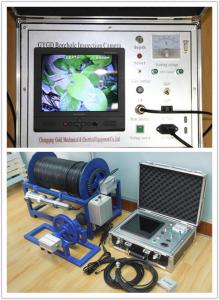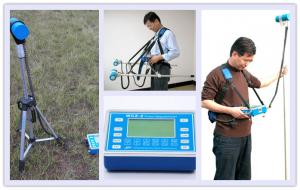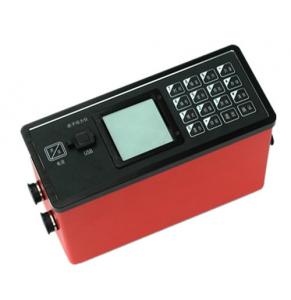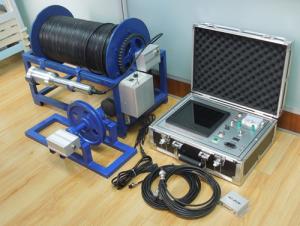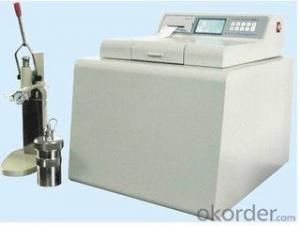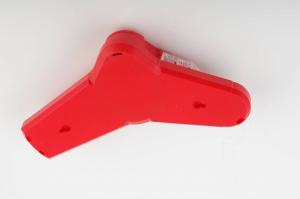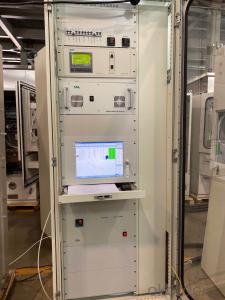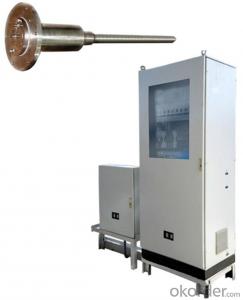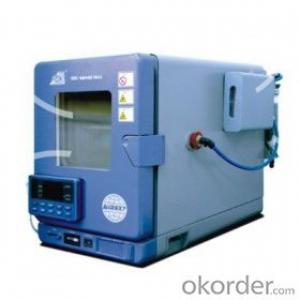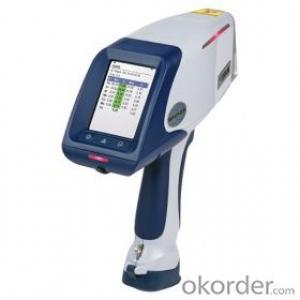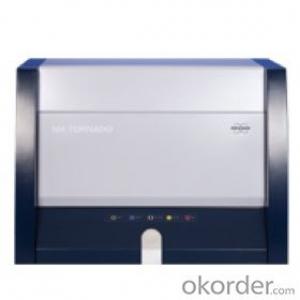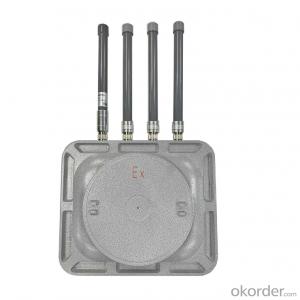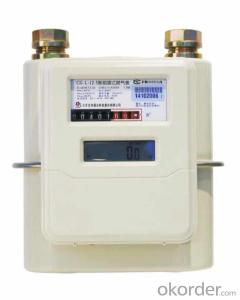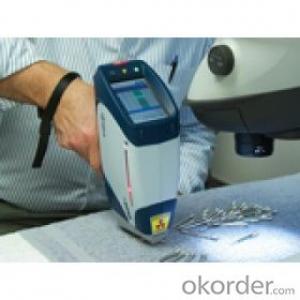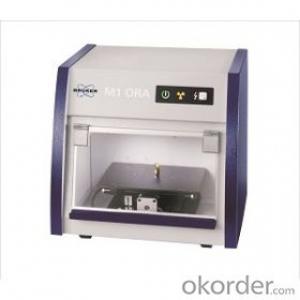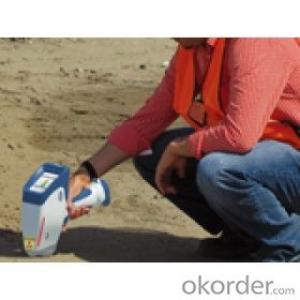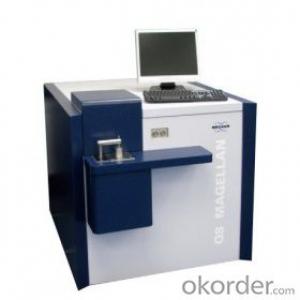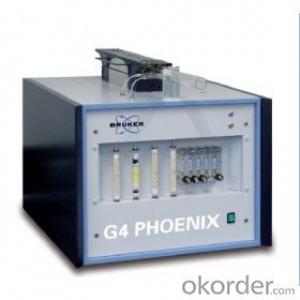ROHS handheld analyzer
- Loading Port:
- China Main Port
- Payment Terms:
- TT OR LC
- Min Order Qty:
- -
- Supply Capability:
- -
OKorder Service Pledge
OKorder Financial Service
You Might Also Like
ROHS handheld analyzer --ROHS (material) Screening
In recent years, more and more manufacturers to follow a series of requirements for the content of the material components into restrictions, such as the typical EU Hazardous Substances (ROHS-2), and the 2008 US CPSIA limits on the maximum content of lead in toys these regulations make more and more manufacturers choose to use XRF strict quality control. Handheld XRF has become the industry's widely accepted products, and forgive screening tool, which for heavy metals and other properties of the substance detection, which is quite effective
Certified by the US Consumer Product Safety Commission, handheld XRF is a very effective detection tool. NDT S1 TITAN provides enterprise can ensure the production of lead-free and comply with ROHS safety instructions for toys and other consumer products for effective detection of heavy metals. Where the detection limit of lead, mercury, chromium, arsenic, antimony and barium, and other harmful elements even reach ppm level
Easy to use: S1 TITAN is currently available on the lightest portable XRF analyzer tube. User interface is designed to provide intuitive operation and results are presented. Data management and transmission is extremely easy
Intuitive User Interface
Requires minimal operational training
Wide sample identification applications
Light weight -1.5kg / 3.3lbs, with battery
Environmental conditions: Protection class IP54; S1 TITAN can withstand all environmental field operation in the design, including wet and dusty environments conditions
Sealed waterproof and dustproof design
Rubber molding, durable
To prevent the intrusion of dirt and sand
Stand can be used to measure a sample of small and complex
Operating temperature: -10 ℃ to ± 50 ℃
Sample temperature (intermittent use): 150 ℃ for Ultralene window, 500 ℃ for Kapton window
TITAN anti-tie detectors: the detector was pierced to prevent the ultimate protection facilities, including this unique patent-pending S1 TITAN accessory can protect the detector window is not pierced sharp pieces of scrap metal and waste lines and other objects, while maintaining the S1 TITAN for almost any material quickly and accurately analyze
The expensive detector to minimize the damage piercing
Improve equipment uptime
No need to replace the window when measuring light elements or recalibrate
Even the measurement of magnesium, aluminum, silicon and other light elements also analyze the effectiveness without sacrificing any
ROHS II (2011/65 / EU) directive compliance
Restriction of hazardous substances: lead, chromium, mercury, cadmium, PDBE, PDB
CE certification of new requirements
Covering all electronic products
All restricted materials can be measured
CPSIA 2008- unleaded toys
Restricted lead content in children's products
Lead content must be less than 100ppm
Cover all toys, clothing and other products
Non-destructive testing to ensure that products meet the requirements
Trusted electronic products
A high degree of reliability for aerospace and medical applications
Provide products needed for the normal operation of lead content
Easily determine the optimum levels of lead
Other Restricted Materials Applications
Halogen-free production
Packaging Act
California Proposition 65
Safe Drinking Water Act
Alloy: standard alloy (Ti - uranium) can be single-phase measurements, to support the nominal concentration of light elements
Alloy LE: alloy analysis, including light elements. Most alloys contain ethnic specific types of high accuracy calibration
Precious Metals: Precious metal alloys optimization settings. Containing alloy grade ID and carat (Karat) display
Low levels of copper in the lead: Detection and measurement of low levels of lead in the copper (lead content up to 2%) in order to comply with the California Safe Drinking Water Act and Proposition 65. This calibration only for 800 and 600
ROHS (Material): for ROHS I / II screening of consumer products. Automatic mode and the user can select the calibration mode, used in plastics, the density of the material as well as user-defined limit IEC metal
ROHS (metal): for metal ROHSI / II of the specification, consumer products, metal, solder and security applications of the test water bill
ROHS (plastic): for non-metallic (plastics and polymers) ROHSI / II of the standard, non-metallic materials and consumer products use of safe drinking water bill each test, including chlorine
Limestone: used in cement, creating and building industries, in order to facilitate analysis of lime, cement and gypsum raw materials and steel. This calibration only for 800 and 600
Mining exploration: for mining, exploration, drilling machine-level control. Contains GeoChem Trace and GeoChem General. When using 800 and 600, this calibration support all light elements by measuring Division Duplex
Soil: Ideal for field testing of contaminated soil and reclamation operations under the EPA 6200. This calibration can be used for catalytic converters and electronic waste recycling applications. When using the 800 and 600, this calibration support all light elements by measuring Division Duplex
- Q:What are the specific methods of chemical instrument analysis?
- Instrumental analysis (modern analysis or physical analysis): a method of analysis based on physical or physical and chemical properties of matter. This kind of method is usually measured by light, electricity, magnetic, acoustic, thermal and other physical quantities and the results of the analysis, and the measurement of these quantities, generally use more complex or special equipment, so called "instrument analysis". In addition to qualitative and quantitative analysis, instrumental analysis can be used in the analysis of structures, valence states, state analysis, micro and thin-layer analyses, micro and ultra trace analysis, etc., and is the direction of the development of analytical chemistry.
- Q:Could you tell me the error range of carbon and sulfur analysis?
- Measurement range of HCS-500 type infrared carbon sulfur analyzer: HCS-500 type infrared carbon sulfur analyzer is the pyroelectric sensor as the core, by high frequency induction combustion furnace and intelligent microcomputer control system composed of infrared analysis instrument. The analysis software is based on WINDOWS XP operating platform, which has standard WINDOWS, Chinese operation interface and user-friendly human-computer interaction function. Mainly used in metallurgy, machinery, commodity inspection, scientific research, chemical and other industries in the ferrous metals, non-ferrous metals, rare earth metals, minerals, minerals, ceramics and other substances in the analysis of carbon and sulfur content.
- Q:What is instrumental analysis?
- An analysis based on the chemical reactions of substances known as chemical analysis. Chemical analysis has a long history and is the basis of analytical chemistry, also known as classical analysis. Chemical analysis is absolute quantitative, according to the amount of the sample, the amount of the reaction product or the amount of reagent consumed and the stoichiometry of the reaction, the quantity of the component to be measured is calculated.
- Q:What instruments are used for building subsidence observation?
- Subsidence, that is, vertical displacement, the general use level, the total station can also, you can look at the observation of subsidence records, generally only need elevation records
- Q:In principle, how many kinds of instrument analysis can be divided into?
- Chromatography mainly includes gas chromatography, liquid chromatography, gel chromatography, ion chromatography, etc.. In addition, electrophoretic techniques and chromatographic techniques are somewhat similar, but are generally treated differently. Chromatography and electrophoresis are used as the separation of mixtures and have certain qualitative functions.
- Q:What are common automatic biochemical instrument analysis systems?
- Biochemical analyzer detection equipment has become the hospital must, according to the structure principle of biochemical analyzer, biochemical analyzer can be divided into continuous flow pipe, vertical, centrifugal and dry type etc., at present the most commonly used clinical discrete biochemical analyzer, the commonly used detection methods including end point method, fixed time method and continuous monitoring method.
- Q:What are chip analysis instruments and methods?
- Probe Station /Probing Test probe probe test, ESD/Latch-up electrostatic discharge / latch test utility (some customers are on the two reliability test, before the chip into the client some customers is failure to think about to take good test piece to screen these) has been put to the most commonly used means. There are some necessary analysis before the process of samples, the failure of die, decap (open, open cap), grinding, ball to De-gold bump, go to the layer, such as coloring, some also need the corresponding instrument machine, you can view the die SEM SAM and X Ray surface, look inside the package and delamination failure.In addition to the commonly used means other failure analysis methods, atomic force microscopy AFM, SIMS two ion mass spectrometry, time-of-flight mass spectrometry TOF SIMS TEM, transmission electron microscopy, field emission scanning electron microscopy, field emission scanning auger microprobe, X photoelectron spectroscopy XPS, L-I-V test system, the energy loss of X optical micro analysis system and many other means however, these projects are not very common.
- Q:The calorific value of testing equipment | thermal analysis instrument is what?
- I was in Guangdong Ocean University, using a HY-4000 precision microcomputer automatic calorimeter, the teacher teaching, we did the test, can detect the coal, oil, the calorific value of straw, 10 minutes out of the results, accuracy is very high, can be accurate to within 5 cards, the first time to see such a bad equipment
- Q:What indicators are used to measure the merits of a detector in instrumental analysis?
- As a matter of fact, the question is difficult to answer without specifying the instrument and detector. And I don't know whether the detector is the detector part of the instrument or the whole instrument as detector.
- Q:Instrumental analysis can be used for porcelain dating
- At present, there is only one instrument in the identification of porcelain age, there is a great use, that is, thermoluminescence detector
1. Manufacturer Overview |
|
|---|---|
| Location | |
| Year Established | |
| Annual Output Value | |
| Main Markets | |
| Company Certifications | |
2. Manufacturer Certificates |
|
|---|---|
| a) Certification Name | |
| Range | |
| Reference | |
| Validity Period | |
3. Manufacturer Capability |
|
|---|---|
| a)Trade Capacity | |
| Nearest Port | |
| Export Percentage | |
| No.of Employees in Trade Department | |
| Language Spoken: | |
| b)Factory Information | |
| Factory Size: | |
| No. of Production Lines | |
| Contract Manufacturing | |
| Product Price Range | |
Send your message to us
ROHS handheld analyzer
- Loading Port:
- China Main Port
- Payment Terms:
- TT OR LC
- Min Order Qty:
- -
- Supply Capability:
- -
OKorder Service Pledge
OKorder Financial Service
Similar products
New products
Hot products
Related keywords


